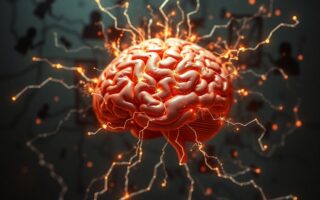Anxiety vs. Anxiety Disorder: Understanding the Difference
Anxiety is a natural response to stress or perceived threats, often characterized by feelings of unease, worry, or fear. It is a normal part of the human experience and can even be beneficial in certain situations, as it helps individuals prepare for and respond to challenges. However, when feelings of anxiety become excessive, uncontrollable, or interfere with daily life, they may indicate the presence of an anxiety disorder. Understanding the distinction between everyday anxiety and an anxiety disorder is crucial for accurate diagnosis and appropriate treatment.
Defining Anxiety
Anxiety is a common emotional response to stressors such as impending deadlines, social situations, or unfamiliar environments. It is often accompanied by physical sensations such as increased heart rate, sweating, trembling, and shortness of breath. While occasional feelings of anxiety are normal and even adaptive, chronic or excessive anxiety can negatively impact an individual’s well-being and functioning. Common triggers for anxiety include financial difficulties, relationship problems, work-related stress, and health concerns.
Types of Anxiety Disorders
Anxiety disorders are a group of mental health conditions characterized by persistent, excessive anxiety and related symptoms. They encompass a range of disorders, each with its own unique features and diagnostic criteria. Some of the most common anxiety disorders include:
- Generalized Anxiety Disorder (GAD): GAD is characterized by persistent and excessive worry about a wide range of everyday concerns. Individuals with GAD often experience physical symptoms such as muscle tension, restlessness, fatigue, and difficulty concentrating.
- Panic Disorder: Panic disorder involves recurrent, unexpected panic attacks characterized by intense fear or discomfort and accompanied by physical symptoms such as chest pain, dizziness, and shortness of breath.
- Social Anxiety Disorder (SAD): SAD, also known as social phobia, involves excessive fear or anxiety about social situations, leading to avoidance of social interactions or significant distress when faced with social scrutiny.
- Specific Phobias: Specific phobias are characterized by intense fear or anxiety about a specific object or situation, such as heights, spiders, or flying. Individuals with specific phobias may go to great lengths to avoid the feared stimulus.
- Obsessive-Compulsive Disorder (OCD): OCD is characterized by the presence of obsessions (unwanted, intrusive thoughts) and compulsions (repetitive behaviors or mental acts performed to alleviate anxiety).
- Post-Traumatic Stress Disorder (PTSD): PTSD can develop following exposure to a traumatic event and is characterized by symptoms such as intrusive memories, avoidance, negative changes in mood or cognition, and heightened arousal.
Key Differences Between Anxiety and Anxiety Disorders
While anxiety is a normal emotional response, anxiety disorders involve persistent, excessive anxiety that interferes with daily life. Anxiety disorders are diagnosable mental health conditions that often require treatment to manage symptoms effectively. Additionally, anxiety disorders may be associated with specific triggers or situations, whereas anxiety may occur in response to a wide range of stressors.
Conclusion
Anxiety is a natural and adaptive response to stress or perceived threats, whereas anxiety disorders involve persistent and excessive anxiety that interferes with daily functioning. While occasional feelings of anxiety are normal, anxiety disorders are diagnosable mental health conditions that may require professional intervention. Understanding the distinction between anxiety and anxiety disorders is essential for accurate diagnosis, effective treatment, and improved quality of life.
| Anxiety | Anxiety Disorder |
|---|---|
| Anxiety is a natural emotional response to stress or perceived threats. | Anxiety disorders involve persistent, excessive anxiety that interferes with daily life. |
| Normal part of the human experience. | Diagnosable mental health conditions. |
| Can be beneficial in certain situations. | May require professional intervention. |
| Often triggered by specific stressors. | May be associated with specific triggers or situations. |
| May occur in response to a wide range of stressors. | Persistent anxiety that interferes with daily functioning. |













